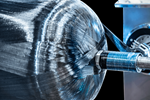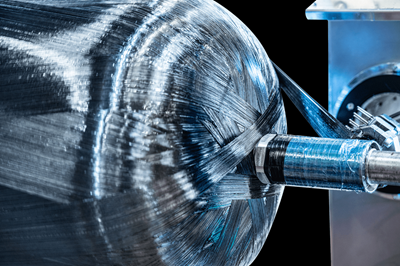Umoe Advanced Composites enters JV for large-scale glass fiber pressure vessel production in China
Large-scale production facility ramps up hydrogen expansion, with an annual production capacity of 12,000 glass fiber pressure vessels.

Photo Credit: UAC
It was announced on May 3 that (UAC, Kristiansand, Norway), a supplier of fiberglass pressure vessels and transportation modules for hydrogen, biogas and compressed natural gas (CNG) has entered into a joint venture (JV) to build up a large-scale production facility in China. A $60 million conditional order has already been placed with the JV.
“We believe our fiberglass-based pressure vessels represent a technological sweet spot for large-scale hydrogen expansion in particular, and we are delighted that leading Chinese industrial and technology institutions share this view,” says Øyvind Hamre, CEO of UAC.
UAC has entered into an agreement with Chinese investment fund Yield Capital, which has invested an undisclosed amount to become a minority shareholder in UAC. Yield Capital is the investment fund of incubation engine Beijing Tsinghua Industrial R&D Institute (China), which is said to be the main player behind China’s hydrogen value chain and part of the country’s leading technology university, Tsinghua University.
The majority of Yield Capital’s investment in UAC is earmarked under the establishment of a JV company in China. UAC will become a majority owner in the JV with an ownership share of 50.001%. The other owners are Yield Capital’s RMB fund in cooperation with Chinese industrial group Befar Group (Binzou City, China), which is one of China’s 500 largest companies.
According to UAC, the JV’s purpose is to build a production facility in China with an estimated annual production capacity of 12,000 pressure vessels. Such a facility is said will provide significant scale advantages and improved competitive position for UAC in all markets, including China and the rest of Asia where the hydrogen market is experiencing huge growth.
The Chinese companies Hypower and Binhua Hydrogen Energy, a subsidiary of Befar Group, have already placed on order for hydrogen pressure tanks worth a total of $60 million. The order is conditional upon the establishment of the JV company and the production facility, plus customary product approval in China.
“The production facility in China will provide powerful scale advantages for customers that today develop their expansion plans based on conventional steel tanks. Further, the partnership with Befar Group and Yield Capital provides with the market access we believe is necessary to succeed in China,” says Hamre.
UAC specializes in the development and manufacturing of glass fiber pressure tanks, which, the company notes, is significantly less costly than using carbon fiber. Moreover, because of its light weight, enables the transport of two to three times more hydrogen compared to similar-sized tanks in steel.
It is this technological sweet spot between carbon fiber and steel that has encouraged Chinese technology investors to invest in UAC.
“UAC’s pressure vessel technology provides large environmental and cost savings compared with competing products. The hydrogen market is expected to grow significantly in the coming years and we are well positioned to become a major player in important markets, allowing even more customers to benefit from our technology and production ramp-up,” says Hamre.
UAC notes that it also expects to invest in its Norwegian production facility, located in Kristiansand, Norway. The plan is to quadruple the manufacturing capacity, from 1,000 to 4,000 pressure tanks annually.
Related Content
Optimizing robotic winding of composite tanks and pipes
Pioneer in mandrel-based reinforced rubber and composite products, TANIQ offers TaniqWindPro software and robotic winding expertise for composite pressure vessels and more.
Read MoreComposite bipolar plates provide 81% improvement to hydrogen fuel cell power density
Ultra-thin CFRTP plates developed by Hycco achieve a 7.5 kilowatt/kilogram power density, high durability for fuel cells in long-flight drone and heavy-mobility applications.
Read MoreBraided thermoplastic composite H2 tanks with co-consolidated molded boss areas to fit EV battery space
BRYSON project demonstrates possible designs, automated manufacturing and low permeability concepts, including EVOH liner and novel PPA matrix.
Read MoreComposite pressure vessels enable future energy storage
Q&A between Hexagon Purus, Infinite Composites and Hyosung USA delves into the future of H2 storage, including scalability and production goals, materials and application trends and other dynamics.
Read MoreRead Next
Nikola Corp. selects Hexagon Purus to supply Type IV hydrogen cylinders for serial production
High-performance composite pressure vessels to be tested and validated later in 2021, and certified for distribution in European and North American markets.
Read MoreCeramic matrix composites: Faster, cheaper, higher temperature
New players proliferate, increasing CMC materials and manufacturing capacity, novel processes and automation to meet demand for higher part volumes and performance.
Read MoreUltrasonic welding for in-space manufacturing of CFRTP
Agile Ultrasonics and NASA trial robotic-compatible carbon fiber-reinforced thermoplastic ultrasonic welding technology for space structures.
Read More












